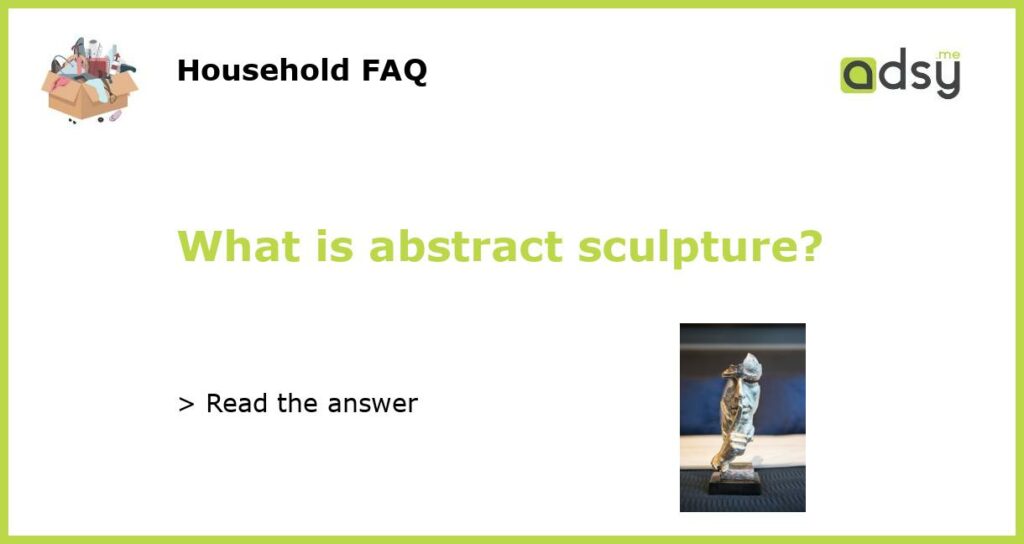What is Abstract Sculpture?
Abstract sculpture is a form of art that does not attempt to represent an accurate depiction of visual reality. Instead, it emphasizes shapes, colors, forms, and gestural marks that may or may not represent recognizable objects or subjects. In abstract sculpture, the artist uses their imagination and creativity to create a unique and subjective interpretation of the world.
History of Abstract Sculpture
The origins of abstract sculpture can be traced back to the early 20th century, during the rise of modern art movements such as Cubism and Surrealism. Artists like Pablo Picasso and Alberto Giacometti began to experiment with abstract forms and distortions of reality in their sculpture work.
However, it was not until the mid-20th century that abstract sculpture gained widespread recognition and popularity. Artists such as Henry Moore, Constantin Brâncuși, and Louise Bourgeois pushed the boundaries of traditional sculpture by exploring non-representational forms and symbolic representations.
Abstract sculpture continued to evolve and diversify in the late 20th century and into the 21st century, with artists experimenting with a wide range of materials, styles, and concepts. Today, abstract sculpture is a vibrant and varied art form that continues to challenge traditional notions of representation and engage viewers in new and innovative ways.
Techniques and Materials
Abstract sculpture can be created using a variety of techniques and materials, depending on the vision and intention of the artist. Some common techniques used in abstract sculpture include carving, modeling, assemblage, and casting. Artists may work with traditional materials such as stone, wood, metal, or clay, or they may incorporate unconventional materials such as found objects or recycled materials.
The choice of materials and techniques often reflects the artist’s conceptual and aesthetic goals. Some artists might prefer the tactile quality of working with clay or the malleability of metal, while others might be drawn to the natural beauty of stone or the industrial aesthetic of welded steel. The choice of materials and techniques can greatly impact the overall look and feel of the sculpture, as well as its durability and longevity.
Meaning and Interpretation
One of the key aspects of abstract sculpture is the open-ended nature of its meaning and interpretation. Unlike representational art, which often seeks to communicate a specific message or narrative, abstract sculpture allows for multiple interpretations and emotional responses.
The viewer is invited to engage with the sculpture on their own terms, bringing their own thoughts, feelings, and experiences to the artwork. This subjective experience can vary greatly from person to person, as each individual brings their unique perspective and understanding to the artwork.
Abstract sculpture can evoke a wide range of emotions and sensations, from tranquility and contemplation to excitement and confusion. The lack of a concrete subject matter or narrative allows the viewer to project their own thoughts and emotions onto the sculpture, creating a deeply personal and introspective experience.
Influence and Impact of Abstract Sculpture
Abstract sculpture has had a profound impact on the world of art and has challenged traditional notions of representation and realism. It has influenced and inspired generations of artists, paving the way for new ideas and experimentation in sculpture and other art forms.
Abstract sculpture has also contributed to a broader understanding and appreciation of abstract art as a whole. By embracing non-representational forms and exploring the possibilities of abstraction, artists have expanded the boundaries of what art can be and how it can be experienced.
The influence of abstract sculpture can be seen not only in the art world but also in architecture, design, and even everyday objects. The principles of abstraction, such as simplification, distortion, and experimentation, have permeated various aspects of contemporary culture, shaping our visual language and aesthetic sensibilities.






